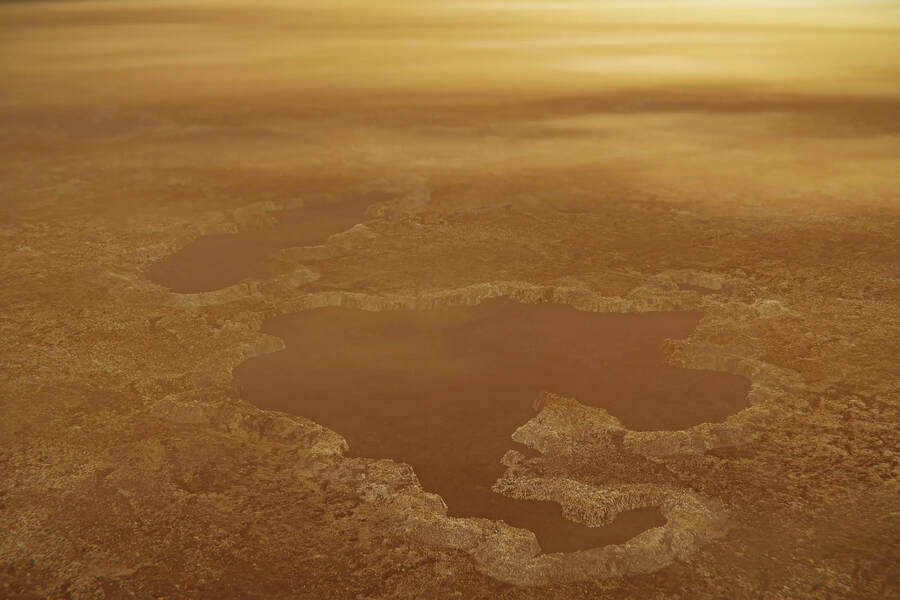THE LATEST
Doubts cast on claims of Titan's lakes being shaped by waves

The recent study conducted by MIT researchers, suggesting that waves may be shaping the lakes and seas on Saturn's moon Titan, has sparked debate among experts in the field. The research used simulations on supercomputers to analyze erosion patterns on Titan's shorelines, but it has been met with skepticism due to its indirect approach and lack of concrete evidence.
Titan is known for its unique landscape, featuring rivers, lakes, and seas filled with liquid methane and ethane, which has long intrigued scientists. The initial confirmation of Titan's liquid bodies came in 2007 through images captured by NASA's Cassini spacecraft. However, the presence of waves on Titan has remained a contentious issue, with conflicting interpretations from researchers.
The MIT team, led by Professor Taylor Perron, aimed to shed light on this debate by modeling erosion scenarios on Titan's seas. Their simulations suggested that waves were the most likely cause of shaping the moon's shorelines. While the results are intriguing, the researchers themselves acknowledge that more direct observations are needed to confirm the presence of waves on Titan.
The study's lead author, Rose Palermo, emphasized the need for caution when interpreting the results, stating, "We can say, based on our results, that if the coastlines of Titan’s seas have eroded, waves are the most likely culprit." However, the lack of direct evidence of wave activity on Titan's surface leaves room for doubt regarding the validity of their conclusions.
Critics argue that relying on modeling and simulations, rather than empirical research, makes it difficult to support claims about wave erosion on Titan. The complex nature of Titan's environment and the limitations of remote observations make it difficult to draw definitive conclusions without physical evidence of wave activity.
As the scientific community grapples with the tantalizing possibility of waves shaping Titan's lakes, many remain cautious about embracing the findings as conclusive proof. The debate over the role of waves in sculpting Titan's landscape is far from settled, highlighting the need for further research and direct observations to unravel the mysteries of this enigmatic moon.
In the quest to unveil the secrets of Titan's alien seas, skepticism serves as a reminder of the importance of rigorous scientific inquiry and the critical assessment of speculative claims. Until concrete evidence of wave activity on Titan emerges, the question of whether its lakes are truly shaped by waves will continue to be met with skepticism by the scientific community.
